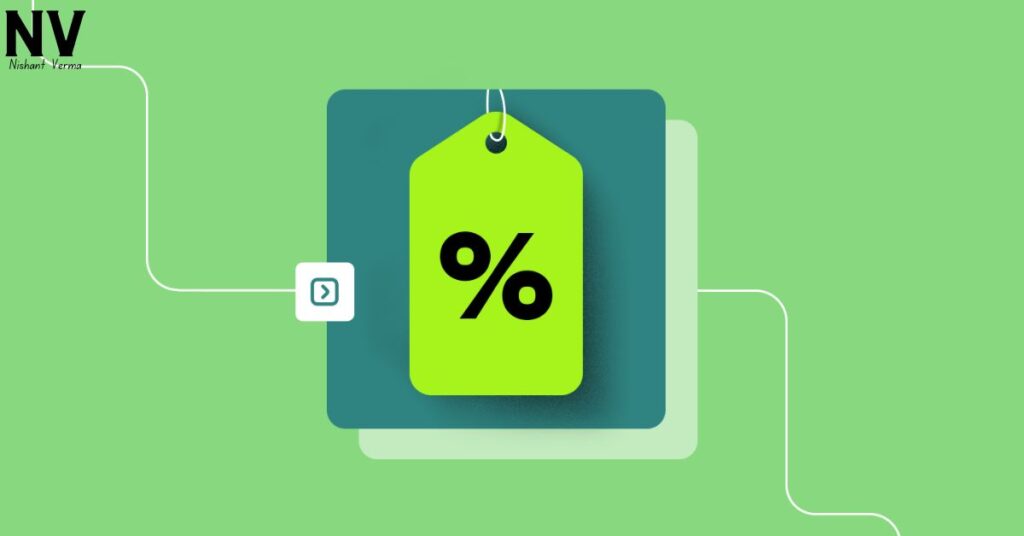Have you ever wondered why some products seem like a steal while others carry a hefty price tag that makes you think twice? The answer lies in the fascinating world of pricing psychology. Pricing strategies for success is not just about numbers; it’s a strategic game that taps into the minds of consumers. In this article, we’ll delve into the psychology of Pricing, breaking down complex concepts into simple language and offering actionable strategies for businesses to set prices that resonate with customers and drive success.

Section 1: The Power of Perception
1.1 The Influence of Perception on Pricing:
Perception plays a pivotal role in how consumers perceive the value of a product. It’s not just about the cost of production; it’s about how the price aligns with the perceived value. Understanding this psychological aspect can empower businesses to craft Pricing strategies for success that appeal to consumer perceptions.
1.2 Anchoring Effect:
The anchoring effect is a cognitive bias where consumers rely heavily on the first piece of information encountered (the “anchor”) when making decisions. Businesses can use this to their advantage by placing a higher-priced option first, making subsequent options appear more reasonable.
Section 2: Setting the Right Price Points
2.1 Charm Pricing:
The charm pricing strategy involves setting prices just below a round number, such as $9.99 instead of $10. This Pricing strategies for success tactic leverages the left-digit effect, where consumers focus on the first digit, making the price seem significantly lower than it is.
2.2 Bundle Pricing:
Bundle pricing involves grouping products and offering them at a discounted rate compared to purchasing each item separately. This strategy increases the perceived value and encourages consumers to feel they are getting a better deal.
2.3 Decoy Pricing:
Introduce a decoy product with a price that makes the main product appear more attractive. The decoy acts as a reference point, influencing customers to choose the main product, which now seems like a better deal in comparison.

Section 3: The Psychology Behind Discounts
3.1 The Scarcity Principle:
The scarcity principle taps into the fear of missing out. Limited-time offers, flash sales or exclusive discounts create a sense of urgency, compelling consumers to purchase before the opportunity disappears.
3.2 Framing Discounts:
How a discount is framed can significantly impact consumer perception. Instead of saying, “Save $10,” say, “Get 20% off.” The discount framing can make the savings seem more substantial, influencing purchase decisions.
3.3 Tiered Discounting:
Offer tiered discounts based on the quantity purchased. For example, “Buy one, get 10% off; buy two, get 20% off.” This encourages customers to buy more to maximize their savings, increasing the average transaction value.
Section 4: The Role of Pricing in Brand Perception
4.1 Luxury Pricing:
Premium or luxury pricing positions a product as exclusive and high-end. This strategy relies on the psychological association between higher prices and superior quality. Luxury pricing creates an image of prestige and exclusivity.
4.2 Penetration Pricing:
Penetration pricing involves setting a lower initial price to gain market share quickly. While this strategy may not yield high profits initially, it can create a perception of affordability and attract price-sensitive consumers.
4.3 Psychological Pricing for Trust:
In industries where trust is crucial, such as healthcare or financial services, using round numbers without decimals or unconventional Pricing (e.g., $1,997 instead of $2,000) can convey a sense of precision and professionalism.
Section 5: Overcoming Price Resistance
5.1 The Power of Free:
Offering a free trial, a complimentary item with a purchase, or a buy-one-get-one-free deal can reduce price resistance. The word “free” has a powerful psychological impact, making the perceived value of the purchase higher.
5.2 Satisfaction Guarantees:
Providing satisfaction guarantees or money-back assurances can alleviate concerns about making a purchase. This psychological safety net encourages consumers to feel more confident in their decisions, reducing price resistance.
5.3 Transparent Pricing strategies for success:
Be transparent about your Pricing. Hidden fees or unclear pricing structures can create distrust and resistance. Communicate the value customers are getting for their money, fostering transparency and trust.
Section 6: Navigating the Psychological Impact of Odd and Even Pricing
6.1 Odd Pricing:
Odd Pricing, like $19.99 or $49.95, effectively creates the illusion of a lower price. The left-digit effect comes into play, making consumers focus on the whole number, which appears lower than it is.
6.2 Even Pricing:
Even Pricing, such as $20 or $50, suggests simplicity and straightforwardness. It can convey a sense of quality and reliability. Even Pricing may be more appealing depending on the Pricing or target audience.
6.3 Context Matters:
Consider the context and expectations of your target audience. For certain products or markets, odd Pricing may create a perception of affordability, while even Pricing may signal premium quality.

Section 7: Implementing Dynamic Pricing strategies for success
7.1 Dynamic Pricing strategies for success Basics:
Dynamic Pricing involves real-time adjusting based on various factors such as demand, competitor pricing, or consumer behaviour. This strategy allows businesses to optimize revenue and adapt to market dynamics.
7.2 Personalized Pricing:
Leverage data and analytics to implement personalized Pricing for individual customers. This can be based on their purchasing history, preferences, or the time of day they typically purchase.
7.3 The Importance of Fairness:
While dynamic Pricing can be a powerful tool, ensuring fairness and transparency is crucial. Consumers should feel that the pricing adjustments are reasonable and reflect the market conditions rather than exploiting individual circumstances.
Section 8: Cultural and Psychological Considerations in Global Pricing
8.1 Cultural Sensitivity:
Different cultures have varying perceptions of Pricing. It’s essential to understand cultural nuances and adapt pricing strategies accordingly. In some cultures, haggling is expected, while fixed Pricing strategies for success is the norm in others.
8.2 Currency Symbol Impact:
The placement of currency symbols can influence how prices are perceived. Research indicates that placing the currency symbol at the end of the price (e.g., 10) instead of the beginning (e.g., $10) can reduce price sensitivity.
8.3 Localizing Price Points:
Consider local economic conditions when setting prices in different regions. Adapting price points to the local market’s purchasing power ensures that products remain accessible and competitive.
Section 9: Case Studies and Success Stories
9.1 Apple’s Pricing Strategy:
Explore how Apple uses premium Pricing to position its products as high-end and exclusive. The sleek design, cutting-edge technology, and a premium price tag contribute to the brand’s perceived value.
9.2 Walmart’s Everyday Low Prices:
Examine Walmart’s success with an everyday low-pricing strategy. By offering consistently low prices, Walmart appeals to cost-conscious consumers, positioning itself as a budget-friendly option.
9.3 Amazon’s Dynamic Pricing:
Analyze how Amazon’s dynamic pricing utilizes dynamic Pricing to adjust prices in real-time based on factors like demand, competitor pricing, and inventory levels. Amazon’s dynamic Pricing contributes to its dominance in the e-commerce space.
Conclusion:
Pricing strategies for success is not merely about numbers on a tag; it’s a psychological dance between businesses and consumers. By understanding the intricacies of pricing psychology, businesses can set prices that align with consumer perceptions, drive sales, and build lasting relationships. Whether it’s the charm of odd Pricing, the allure of discounts, or the prestige of luxury pricing, mastering the art of Pricing strategies for success is a journey of continuous learning and adaptation. With these insights, businesses can navigate the complex pricing landscape. Pricingrning the price tag into a powerful tool for success in the ever-evolving marketplace.




